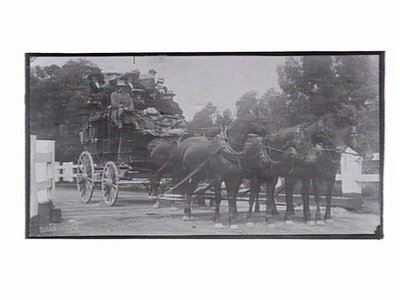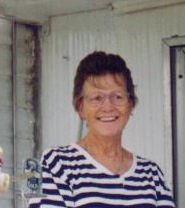 A BRIEF HISTORY OF COBB & CO
A BRIEF HISTORY OF COBB & CO
The Company’s Beginnings
Established with the intention of servicing the Victorian goldfields, Cobb & Co quickly developed to become the most successful company of its kind during the 19th Century, pioneering transport routes, delivering mail, gold and passengers throughout the country and contributing greatly to social growth and the expansion of pastoral settlement across Australia.
Cobb & Co was set up in Melbourne, Victoria in 1853 by a small group of immigrant Americans - Freeman Cobb, John Murray Peck, John B Lamber and James Swanton – and originally was called the American Telegraph Line of Coaches. The company’s first passenger coach left Melbourne for Forest Creek (now Castlemaine) and Bendigo on 30 January 1854; the list of routes was expanded shortly thereafter to link the newer goldfields and settlements with the Victorian capital. Soon, mail contracts were awarded to the business and the Cobb & Co operated a gold escort, passenger and mail service based on reliable and efficient schedules.
Changing Hands
In May 1856, the company was sold for 16,000 pounds to Thomas Davies and changed hands again five years later when it was bought for 23,000 pounds by a consortium headed by James Rutherford, William Franklin Whitney and Alexander William Robertson (others in the initial lineup included Walter Russell Hall, John Wagner, B Robertson, Colin Robertson and Charles Pollock). Rutherford became the General Manager and both he and Whitney were to become the driving forces behind Cobb & Co’s success.
From Strength to Strength
In 1862, the company’s headquarters were transferred from Victoria to the New South Wales town of Bathurst, a Rutherford initiative designed to follow the goldfield trade. At that stage, Bathurst was the only provincial town west of the Blue Mountains and it was an important centre for business and trade. On 26 June 1862, an impressive cavalcade of horses, coaches, wagons and drivers – with Rutherford at the reins of the first coach – arrived in Bathurst from central Victoria to be greeted by a grand turnout of locals and enthusiastic fanfare. The Cobb & Co entourage was so large that, on the first night, it had to camp beside the Macquarie River until suitable accommodation and stabling could be found.
The company didn’t waste any time in establishing itself in the Bathurst scene. Within a week, Cobb & Co was operating a regular service to Forbes, Rutherford having used the time to ride the route and establish changing stations approximately every ten miles (16km to 20km). Horses, harness, stables, grooms and stock feed supplies were organised; booking offices were set up in Bathurst, Orange and Forbes; inns, shanties and post offices were used to service the passengers en route. The speed and skill of Cobb & Co were such that an entire day was cut from the previous journey time between Bathurst and Forbes. It was the efficiency of the service and the ability to regularly change horses that provided the competitive edge to the company’s commercial operations.
From here, its fortunes went from strength to strength thanks to lucrative mail and gold escort contracts, the rapid increase of rural settlement across Australia and the company’s innovative approach to conducting its business. Before long, Cobb & Co had bought out many of its rival firms, expanded into Queensland in 1865 and embarked on a program of diversification, which included founding the Eskbank Iron Works at Lithgow, shipping jarrah from Western Australia to India, operating pastoral enterprises and becoming involved in the extension of the railway network across New South Wales. Coachworks were established in Bathurst, Bourke, Goulburn, Hay and Charleville, business boomed and the name of ‘Cobb & Co’ became the byword for cutting edge communications and transport facilities across eastern Australia.
The company was enormously successful and had branches or franchises throughout much of Australia, New Zealand, South Africa and Japan. At its peak, Cobb & Co operated along a network of tracks that extended further than those of any other coach system in the world – its coaches travelled 28,000 miles (44,800km) per week and 6000 (out of their 30,000) horses were harnessed every day. Cobb & Co created a web of tracks from Normanton on the Gulf of Carpentaria and Port Douglas on the Coral Sea down to the furthest reaches of Victoria and South Australia – in all, a continuous line of 2000 miles (3200km) of track over eastern Australia from south to north, with a total of 7000 miles (11,200km) of regular routes.




7 comments:
Gidday Margaret, a great post(s) on Cobb & Co. I love reading about the history of most subjects (like your Cobb & Co and my Brisbane posts which I enjoyed researching). Look forward to some photos from Grafton.
An excellent follow on post on Cobb and Co. Margaret, sure to be well received.
Hi Margaret
good history lesson on Cobb and Co
I like your taste in music
Take Care keep smiling
I love The Rose.
Good, informative post.
I love learning how some companies came to light...little do they know just how famous they would become! Thanks so much for sharing this story with us!
Very nice, Margaret.
And are they still going today?
Hope you had a nice trip.
..
Very interesting history and pictures!
Junie
Post a Comment